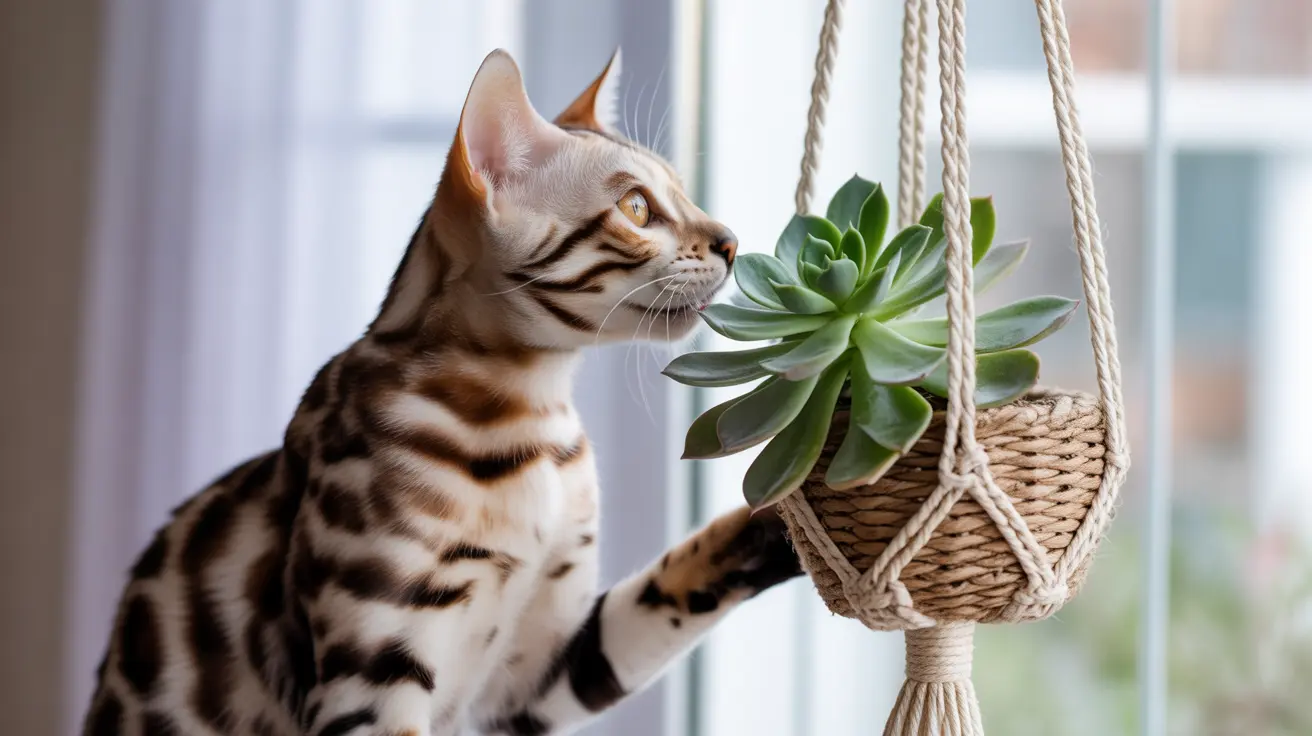If you're a cat owner who loves decorating with trendy houseplants, you might be wondering about the safety of succulents around your feline friend. While many succulents are perfectly safe for homes with cats, several popular varieties can be toxic if ingested. Understanding which succulents pose risks and how to protect your cat is essential for creating a pet-safe environment.
In this comprehensive guide, we'll explore which succulents are dangerous for cats, identify safe alternatives, and provide crucial information about symptoms and emergency care if your cat encounters a toxic variety.
Toxic Succulents: Know the Dangers
Several common succulent varieties can be harmful to cats, with effects ranging from mild irritation to serious illness. Here are the most concerning types:
Aloe Vera
Despite its healing properties for humans, Aloe Vera contains compounds called saponins that are toxic to cats. Ingestion can cause vomiting, diarrhea, and lethargy. Keep this popular succulent out of reach or consider alternatives in homes with cats.
Jade Plant (Crassula Ovata)
This common houseplant, also known as the money tree, can cause severe gastrointestinal upset and coordination problems in cats. Even small amounts can trigger symptoms like vomiting and depression.
Euphorbia Species
These succulents, including the pencil cactus and crown of thorns, contain an irritating sap that can cause both internal and external reactions. Contact with the sap can lead to skin irritation, while ingestion may result in severe digestive issues.
Safe Succulent Options for Cat Owners
Fortunately, many beautiful succulents are safe for homes with cats:
- Echeveria varieties
- Haworthia (Zebra Plant)
- Sempervivum (Hens and Chicks)
- Christmas Cactus
- Burro's Tail
Recognizing Symptoms of Succulent Poisoning
If your cat has consumed a toxic succulent, watch for these warning signs:
- Excessive drooling
- Vomiting or diarrhea
- Lethargy or depression
- Loss of appetite
- Difficulty walking or coordination problems
- Skin irritation or rashes
Prevention and Safety Measures
Protect your cat by implementing these safety strategies:
- Research before purchasing new succulents
- Keep toxic varieties in hanging baskets or closed terrariums
- Create designated plant areas your cat cannot access
- Provide cat-safe alternatives like cat grass
- Use natural deterrent sprays around plant areas
Emergency Response Plan
If you suspect your cat has ingested a toxic succulent:
- Identify the plant if possible
- Contact your veterinarian immediately
- Have the ASPCA Animal Poison Control number ready: (888) 426-4435
- Monitor your cat's symptoms
- Follow professional medical advice for treatment
Frequently Asked Questions
Are succulents poisonous to cats, and which common varieties should I avoid?
Yes, some succulents are poisonous to cats. The most dangerous varieties include Aloe Vera, Jade Plant (Crassula), Euphorbia species, and Kalanchoe. These plants can cause various symptoms from mild stomach upset to severe illness.
What symptoms should I watch for if my cat ingests a toxic succulent like Aloe Vera or Jade Plant?
Watch for vomiting, diarrhea, excessive drooling, lethargy, loss of appetite, and coordination problems. In severe cases, cats may experience tremors or irregular heart rhythms.
How can I safely keep succulents in my home without risking my cat's health?
Choose pet-safe varieties like Echeveria or Haworthia, use hanging planters or closed terrariums for toxic varieties, and create designated plant areas your cat cannot access. Consider using natural deterrent sprays around plants.
What are the safest succulents for homes with cats that I can grow without worry?
Safe options include Echeveria, Haworthia (Zebra Plant), Sempervivum (Hens and Chicks), Christmas Cactus, and Burro's Tail. These varieties won't harm your cat if accidentally ingested.
What steps should I take immediately if I suspect my cat has eaten a poisonous succulent?
Immediately contact your veterinarian or the ASPCA Animal Poison Control Center, identify the plant if possible, and monitor your cat's symptoms. Don't wait for symptoms to appear before seeking help.
Creating a safe environment for both your cats and your beloved succulents is possible with proper knowledge and precautions. By choosing pet-safe varieties and implementing smart prevention strategies, you can enjoy these beautiful plants while keeping your feline friends protected.






